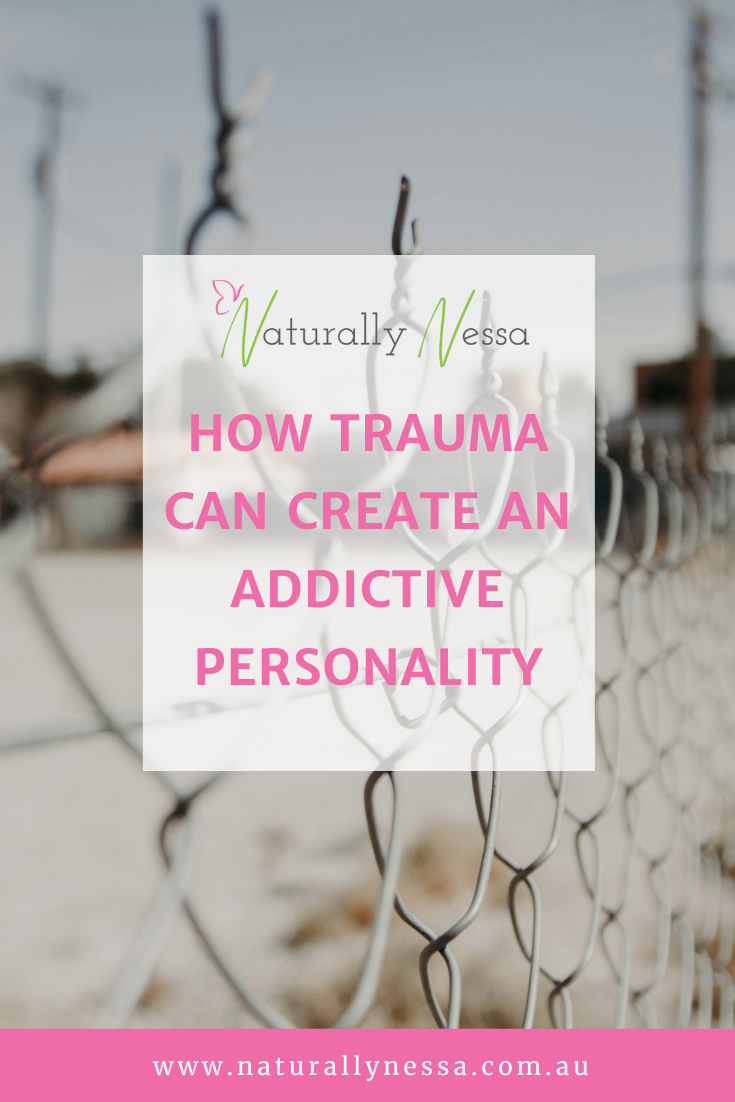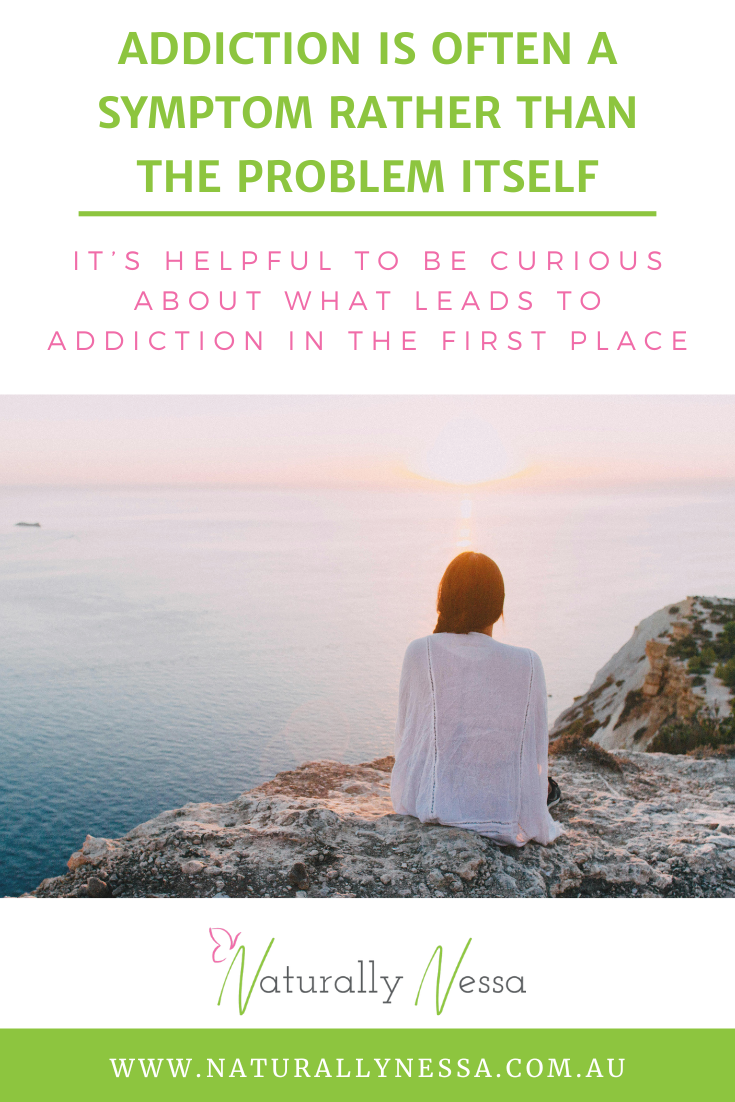How Trauma Can Create an Addictive Personality
The connection between trauma and addiction is a vital piece of the puzzle for those experiencing addiction disorders.
The knowledge of how trauma impacts a person, provides us with another part of the puzzle in making sense of the thoughts, emotions, and behaviours associated with the addiction process.
Besides substance use disorders, millions of people worldwide experience the painful consequences of behavioural addictions, including gambling, gaming, food, shopping, or pornography.
My hope is to bring greater awareness to the impact trauma has on our emotions and our overall functioning.
Addiction is often a symptom rather than the problem itself.
While addiction certainly creates additional problems, it’s helpful to be curious about what drives the behaviours that lead to addiction in the first place.
Excessive use of drugs, alcohol, or other unhealthy coping behaviours, probably began as a way to numb out from a problem and pain.
Substance use and compulsive behaviours are more likely a way of managing a problem, rather than being the only issue that needs addressing.
But what, exactly, is that problem?
New research in neuroscience and addiction, along with a greater understanding of the impacts of trauma and stress, provide us with vital answers to that question.
It’s crucial to grasp two important things when trying to understand the seemingly baffling behaviours of substance use and addiction disorders. What is the pain or problem your substance use or addictive behaviour is trying to fix?
Knowing how our nervous system is wired helps us better understand our thoughts, feelings, behaviours, body sensations, and automatic reactions. Understanding our nervous system helps us know what makes us human.
We need to recognise that difficult or traumatic experiences impact almost every aspect of who a person is.
It is essential to understand our nervous system, if we want to make sense of how trauma impacts it.
This system includes our brain, spinal cord, and nerve systems that run throughout our body.
Essentially, it controls everything we do. It is our basic operating system – controlling our thoughts, feelings, instincts, bodily functions, and bodily sensations.
The impacts or symptoms of trauma are divided into two groups.
The first category is “hyper-arousal” – referring to too much activation or energy in the nervous system.
The second category is “hypo-arousal” – when the nervous system responds to trauma in ways that include numbing and shutting down.
HYPER-AROUSAL - THE “TOO MUCH” TRAUMA SYMPTOMS
The term “hyper-arousal” describes the high level of activation that remains in the nervous system, and the physical body, following a traumatic experience.
It is an ongoing activation of the fight or flight response, even after the threat or the trauma has ended.
A traumatized person continues to experience high nervous system activation that alters their experience of self, the world, and others.
Another way to describe hyper-arousal is that there is too much of a vast number of uncomfortable symptoms, including:
• Your Nervous System Remains on High Alert
You might be more jittery or startle easily. You might be more emotionally reactive and experience more significant irritability, aggressiveness, or impulsivity.
Perhaps you are hypervigilant – always watchful for any sign of potential threat.
Insomnia can also be a common problem if our nervous system continually scans for possible danger.
• Physical Symptoms
When our nervous system remains on high alert, our body also remains on high alert.
Overwhelming physical sensations can continue, following a trauma, resulting from the fight or flight response remaining activated long after the danger has passed.
Symptoms of this can include tension, digestive problems, excessive sweating, and elevated heart rate.
• Re-experiencing Symptoms
These profoundly disturbing experiences include trauma-based flashbacks, nightmares, and intrusive images. Intrusive experiences are the ways you may continue to relive your original trauma.
• Emotional Reactivity
Several painful emotions come from unresolved trauma: heightened anxiety, fear, shame, and anger.
These are all normal reactions to trauma, but if these powerful emotions create significant problems in your life, it may be a sign of unresolved trauma.
• Self-Destructive Behaviours
Trauma also leads to self-destructive behaviours, that can be an attempt to manage the overwhelming experience of trauma symptoms: self-harming, eating disorders, compulsive sexual activity, and problematic substance use are much more common among people with a history of traumatic experiences.
HYPO-AROUSAL - THE “TOO LITTLE” TRAUMA SYMPTOMS
“Hypo-arousal” is used to describe different post-trauma experiences.
Rather than a state of high activation, experienced through the “too much” symptoms of hyper-arousal as listed previously, hypo-arousal symptoms show up as a state of disconnection, numbing, and avoidance.
“Dissociation” is the clinical word often used to describe this state of shutdown.
If the hyper-arousal state is the fight or flight response, the hypo-arousal state is the freeze response.
This experience of dissociation or disconnection helps make a painful experience more tolerable in some ways. This type of reaction occurs without conscious thought. It’s an automatic response to an overwhelming experience. It happens, in part, as a way of protecting us from the painful experiences of trauma symptoms.
When trauma activation in the nervous system results in a freeze response, it contributes to the development of trauma symptoms that fall into the “too little” category.
• Emotional Numbness
There is a sense of being emotionally numb, detached, or empty. You might feel out of touch with your emotions.
It is a way of protecting against painful feelings. For some, this numbness happens automatically. For others, substances or behaviours help create emotional numbness.
The downside of numbing painful emotions, is that it blunts the good ones. Another reason people become addicted.
• Relational Avoidance and Isolation
Traumatic experiences can create a tendency to withdraw and isolate. Unresolved trauma, primarily relational trauma, can make you more comfortable avoiding intimacy or connection with other people.
• Physical Symptoms
The “too little” symptoms that impact the body include having little or no energy to complete daily tasks.
The experience of fatigue or exhaustion is common. In addition, trauma can affect the ability to feel sensations in the body.
• Behavioural Symptoms
You may have challenges being forgetful or spaced out - if you learned to cope with trauma by dissociating or shutting down, you might continue to respond in the same way when faced with stressful situations today.
Symptoms of hypo-arousal and dissociation contribute to substance use and addiction disorders by creating a need to feel something.
TRAUMA AND ADDICTION - THE LINK WE CAN’T IGNORE
For many people, addictive patterns are often a way of dealing with distress – it’s a behaviour that begins out of pain.
Drugs, alcohol, and compulsive behaviours are a way to numb that pain.
Feeling no pain, taking the edge off, numbing out.
There is a reason why many references to substance use demonstrate a desire to change a painful or uncomfortable experience. Because it works, even if temporarily.
Many who struggle with addiction are proof of that, especially if trauma has been a contributing factor.
People with addiction often medicate trauma symptoms.
Trauma isn’t so much about the experience that happened – trauma is more about how that event has continued to impact us.
It’s about how our nervous system keeps being affected by that painful experience, even years after it happened.
When we experience the threat of a traumatic situation, our nervous system activates our threat response system (often referred to as the fight or flight response).
Trauma rattles most aspects of who we are: our physical bodies, our emotions, our thought processes, and our connections with other people. And these impacts are often felt long after the event has passed. Even if we were too young to remember the trauma, our nervous system still remembers.
This is why nervous system work is so important.
Trauma and adverse experiences can trigger excessive fear or anxiety, long after the original threat of the trauma is over. It can lead to overwhelming anger, shame, or other painful emotions.
Trauma can make our inner ‘alarm system’ more reactive, so that we become more ‘on guard’, or have difficulty sleeping.
Overwhelming events can also create intrusive thoughts and disturbing memories. It’s these symptoms (and many others) that motivate people to use alcohol and drugs in an attempt to medicate these painful impacts of trauma.
These symptoms are easier to understand if we think about them in terms of how trauma impacts our nervous system.
For those who’ve had trauma, addiction is, most often, a way to soften the pain. Let’s remember that substance use, and other addiction disorders, began as an attempt to numb a problem that trauma created.
Trauma-informed care recognizes that the principles of safety and compassion are foundational to the process of healing and recovery for anyone experiencing a substance use disorder, especially when trauma has been a contributing factor.
If you feel you can relate to anything you have read, please reach out to a professional.
PIN FOR LATER:


